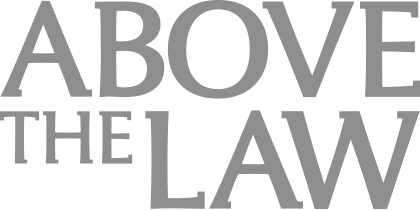Readiness 2.0: What Does 'Readiness' Mean In 2024 And Beyond?
The criteria that will define successful legal ops teams.
 In the rapidly evolving landscape of legal operations, the concept of “readiness” has become multifaceted.
In the rapidly evolving landscape of legal operations, the concept of “readiness” has become multifaceted.
As we look toward 2024 and beyond, readiness in legal operations encompasses not only technological preparedness but also strategic reskilling, cultural adaptability, and a forward-thinking mindset.
Here, we explore the critical components of readiness that will define successful legal ops teams in the future.
Embracing Technological Advancements
Integrating Generative AI (GAI) and other advanced technologies into legal operations is no longer optional — it’s a necessity.
However, as we’ve seen, rapid adoption without adequate preparation can lead to underutilized technologies and unmet expectations.
Legal departments need to lay the groundwork for managed GAI use to increase productivity without incurring unnecessary risk.
Strategic Reskilling
One of the early adopters’ most critical errors is not paying enough attention to a comprehensive reskilling strategy.
To unlock AI’s full potential, legal organizations must focus on the strategic reskilling of employees, enabling them to understand new ways of working with these transformative tools. This involves not just training on the technical functionalities but also the practical applications in daily legal work.
Strategic reskilling should start with easy-to-use, inexpensive GAI tools that allow employees to explore and experiment. Encouraging experimentation by creating “throwaway GPTs” for specific projects helps employees identify valuable applications of AI in their daily tasks without the pressure of permanent implementation.
A pilot program with an early adoption group can also be beneficial, as the most eager members of the group can be the first to go through the reskilling process, leveraging their enthusiasm and productivity gains to motivate others.
Once the legal team is proficient, expanding the AI tools organization-wide through platforms like Slack or Teams ensures broader use and integration into daily workflows.
Cultural Adaptability
Readiness also means fostering a culture that embraces change and innovation.
The legal industry is traditionally slow to adopt new technologies due to its nature of relying on precedent and established frameworks. Overcoming this resistance requires a shift in mindset and the creation of an environment where continuous learning and adaptation are valued.
Drawing parallels to the promises made by Contract Lifecycle Management (CLM) technologies in recent years, it becomes evident that readiness transcends any single technological solution.
CLM tech promised to revolutionize contract management by streamlining processes, improving compliance, and reducing costs. While many of these promises have been realized, the actual value was unlocked by organizations that were culturally ready to embrace the changes brought by these tools.
This readiness involved not just implementing the technology, but also fostering a culture that supported continuous improvement, adaptability, and proactive problem-solving.
Similarly, the success of GAI and other advanced technologies in legal operations hinges on more than just the technology itself.
Cultural adaptability remains a cornerstone of readiness, ensuring the organization can pivot and evolve with technological advancements. Legal ops teams must cultivate an environment where innovation is encouraged and employees are empowered to explore new tools and methodologies without fear of failure.
Aligning With Business Objectives
For readiness to be effective, it must be aligned with the broader strategic objectives of the organization. This alignment ensures that the skills being developed and the technologies being adopted directly apply to the organization’s tasks and challenges.
In the legal industry, this means identifying how GAI can enhance legal practices and tailoring reskilling programs to support these applications.
Effective alignment requires communicating with the C-suite in a language they understand and areas they are most interested in.
Legal operations professionals should focus on demonstrating how GAI and other technological advancements can drive business growth, optimize costs, and enhance efficiency. Legal ops can secure the necessary buy-in from senior leadership by presenting clear, data-driven ROI analyses and aligning initiatives with the company’s strategic goals.
When communicating with the C-suite, it is essential to highlight how proposed changes will impact the bottom line, improve competitive positioning, and mitigate risks.
Use business metrics that resonate with executives, such as cost savings, efficiency gains, and enhanced compliance.
For example, illustrating how automating routine legal tasks with GAI can free up attorneys to focus on high-value work, thereby increasing overall productivity and reducing legal spend, can be compelling.
Practical Steps for Implementation
To effectively integrate these advancements and cultivate readiness, legal operations teams should develop an overarching strategy in conjunction with legal leadership that aligns with the company’s goals and risk tolerance.
Performing a workload analysis is essential to understand what work is being handled in legal that should be done by another function, as well as to identify opportunities for process improvements and automation. Leveraging pilot programs to test the viability of proposed resources can provide tangible data on their efficacy, making a strong case for broader implementation.
Effective communication is crucial throughout this process.
Framing resource requests in clear, concise terms and focusing on the benefits for the broader organization can help secure buy-in from stakeholders. Regular updates on progress and impact also ensure continued support and engagement.
Additionally, staying updated on legal tech trends allows legal operations teams to advocate for cutting-edge solutions that offer substantial efficiencies and improvements, ensuring they remain ahead of the curve in legal tech advancements.
Simple Starter Use Cases for GAI Integration
Introducing employees to GAI through simple starter use cases can significantly enhance their comfort and proficiency with the technology. This allows them to augment their skills and see immediate benefits without feeling overwhelmed.
For instance, brainstorming on meeting planning can help generate meeting ideas and agendas, ensuring all relevant points are covered. Summarizing lengthy benchmarking reports can highlight key insights and metrics while extracting important contract terms and clauses, making reviewing and managing legal documents more efficient. Automating FAQs on policies and procedures can reduce repetitive inquiries and free up time for staff, and drafting Objectives and Key Results (OKRs) can help set clear, achievable goals based on company performance data.
Conclusion
The potential for GAI to revolutionize the legal industry is undeniable, but realizing this potential requires a strategic approach.
Legal operations teams can achieve significant gains by prioritizing reskilling, fostering a culture of adaptability, and aligning with business objectives. The journey to effective AI integration begins with small, manageable steps and a commitment to continuous learning and adaptation.
In the rapidly changing legal landscape, readiness means being prepared to embrace new technologies, continuously improve processes, and cultivate a workforce capable of leveraging these advancements to their fullest potential. As we move into 2024 and beyond, legal operations teams prioritizing these aspects will be well-positioned to thrive.
 Stephanie Corey is a co-founder and CEO of UpLevel Ops. Stephanie also co-founded LINK (Legal Innovators Network), a legal operations organization exclusively for experienced, in-house professionals. She previously founded the legal operations trade organization CLOC (Corporate Legal Operations Consortium) and is a former executive member. Please feel free to contact and connect with her on LinkedIn.
Stephanie Corey is a co-founder and CEO of UpLevel Ops. Stephanie also co-founded LINK (Legal Innovators Network), a legal operations organization exclusively for experienced, in-house professionals. She previously founded the legal operations trade organization CLOC (Corporate Legal Operations Consortium) and is a former executive member. Please feel free to contact and connect with her on LinkedIn.







